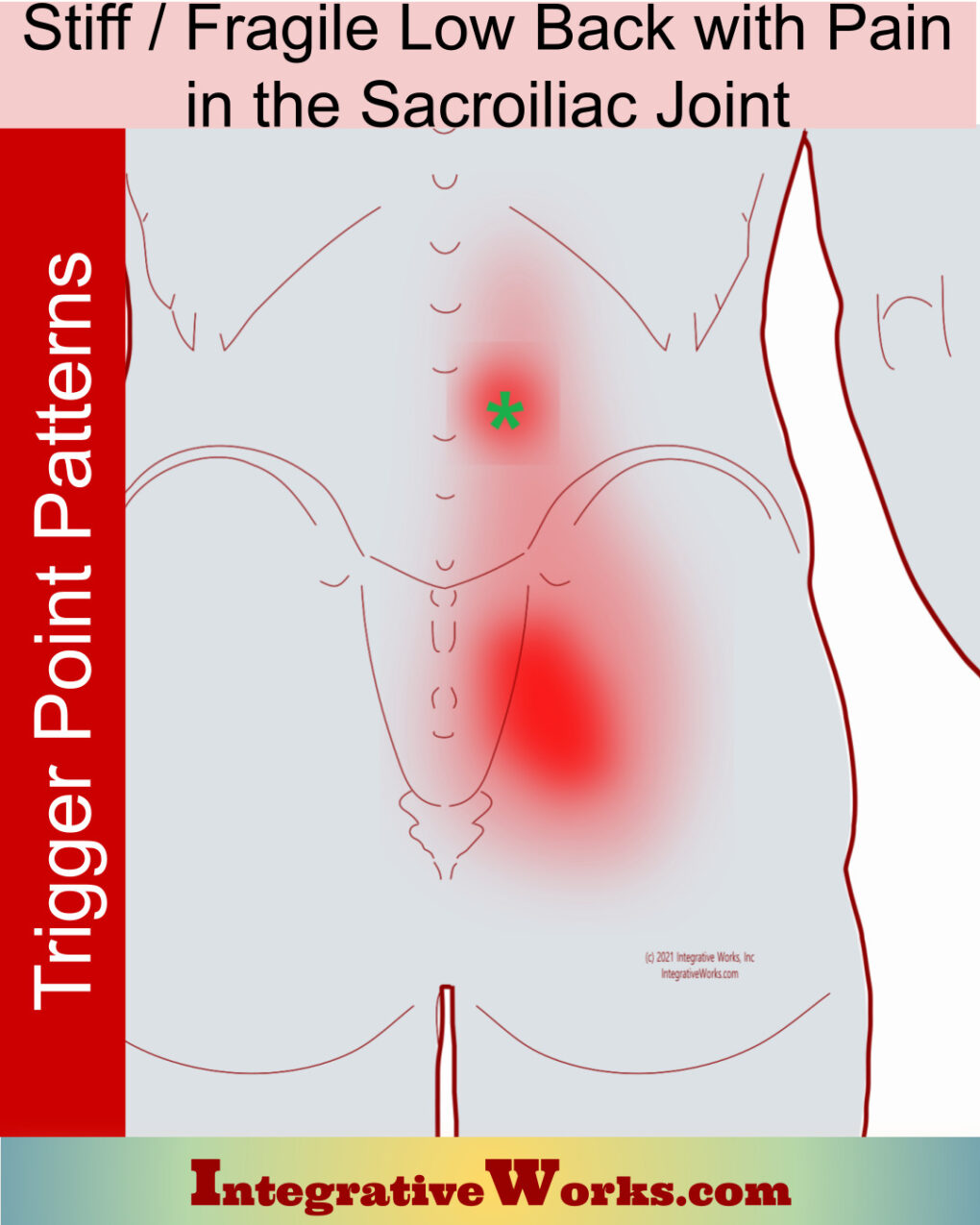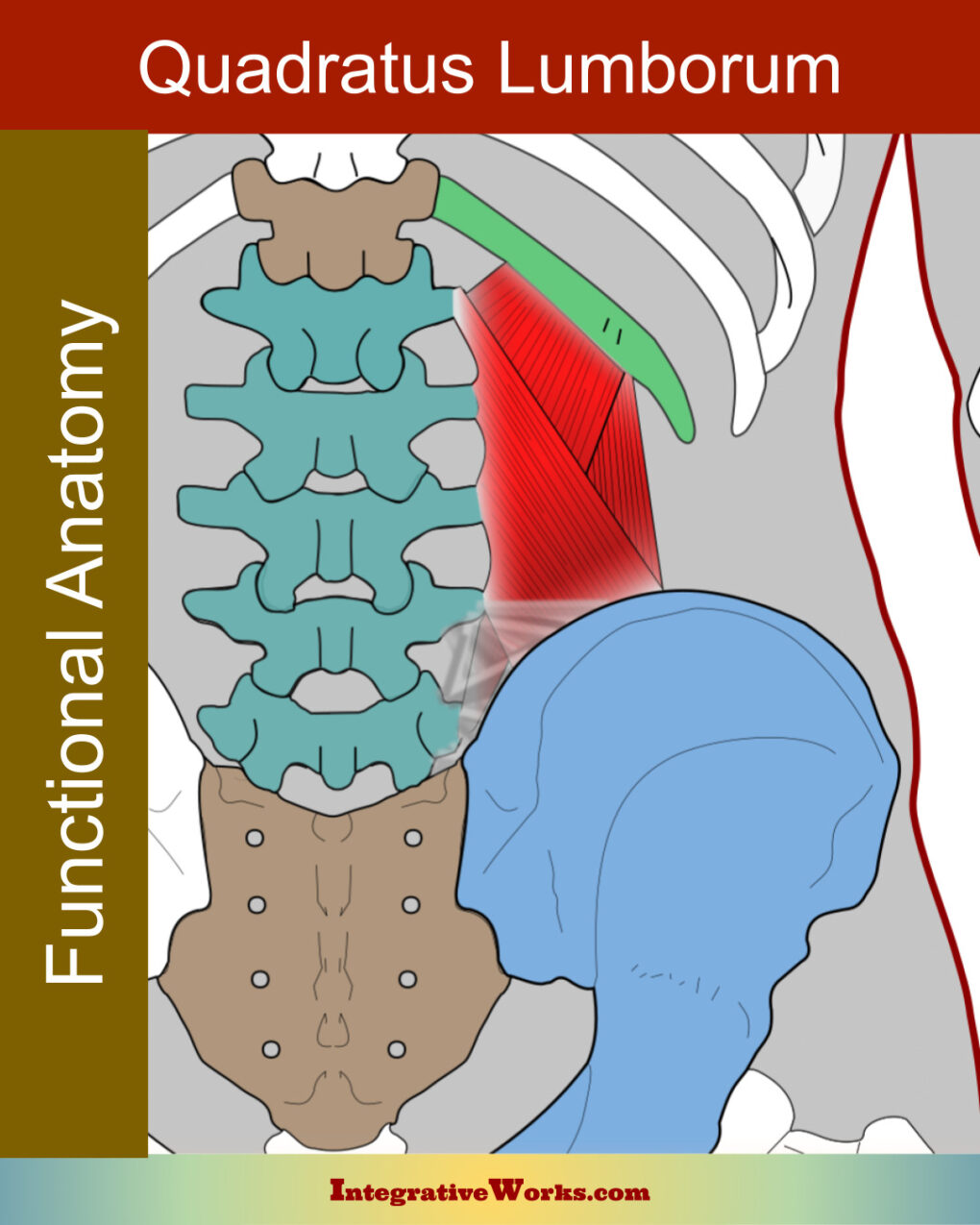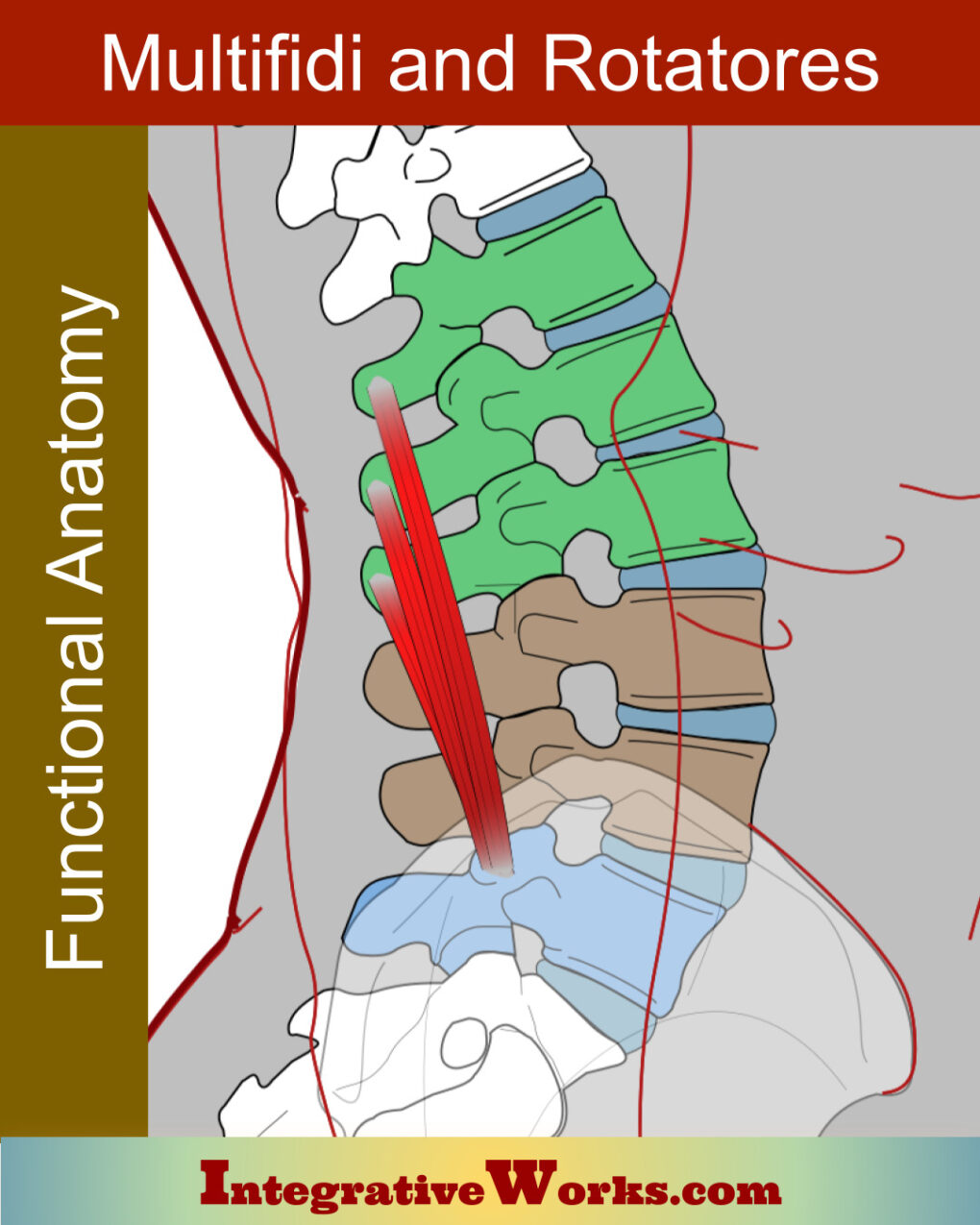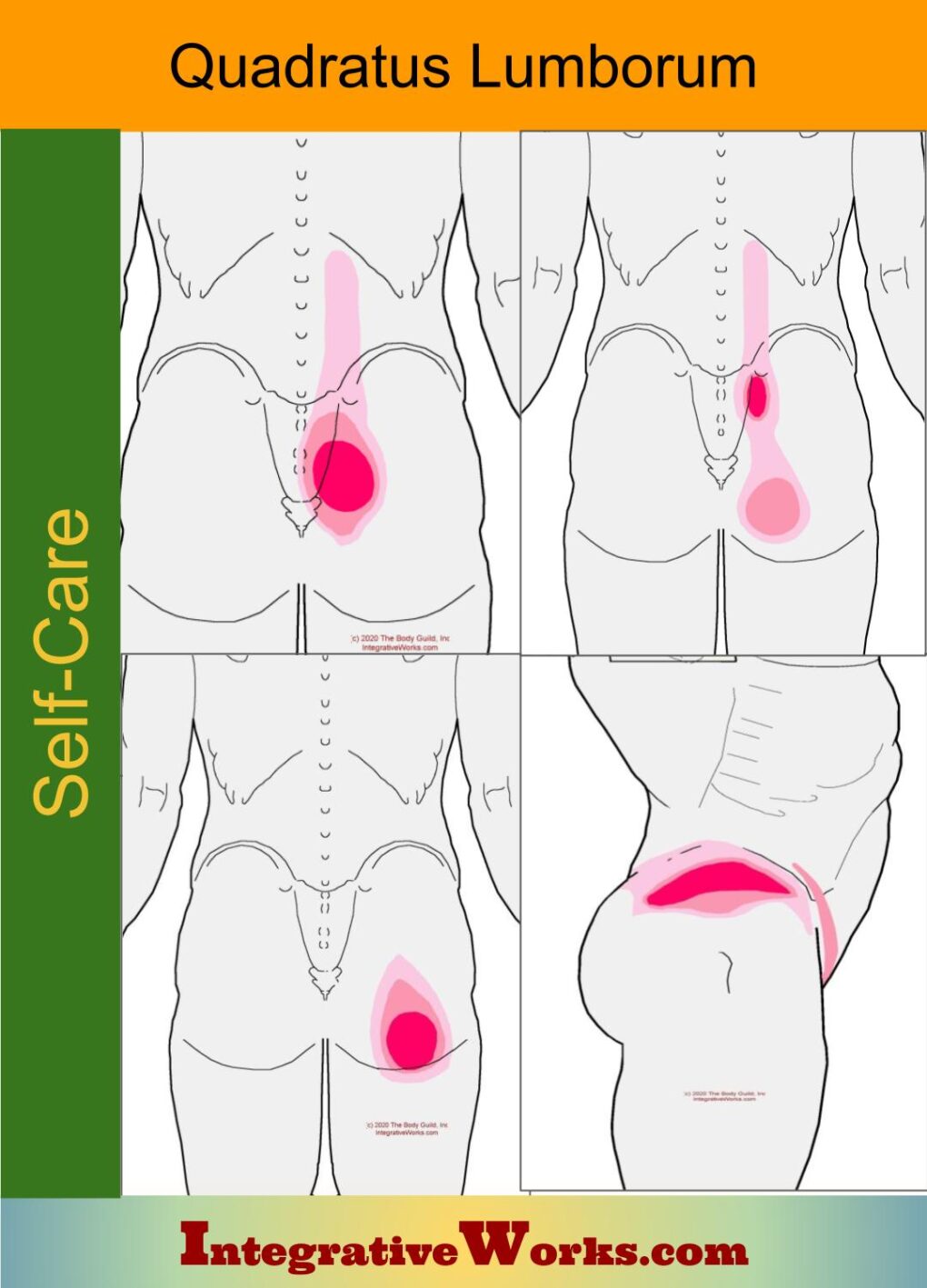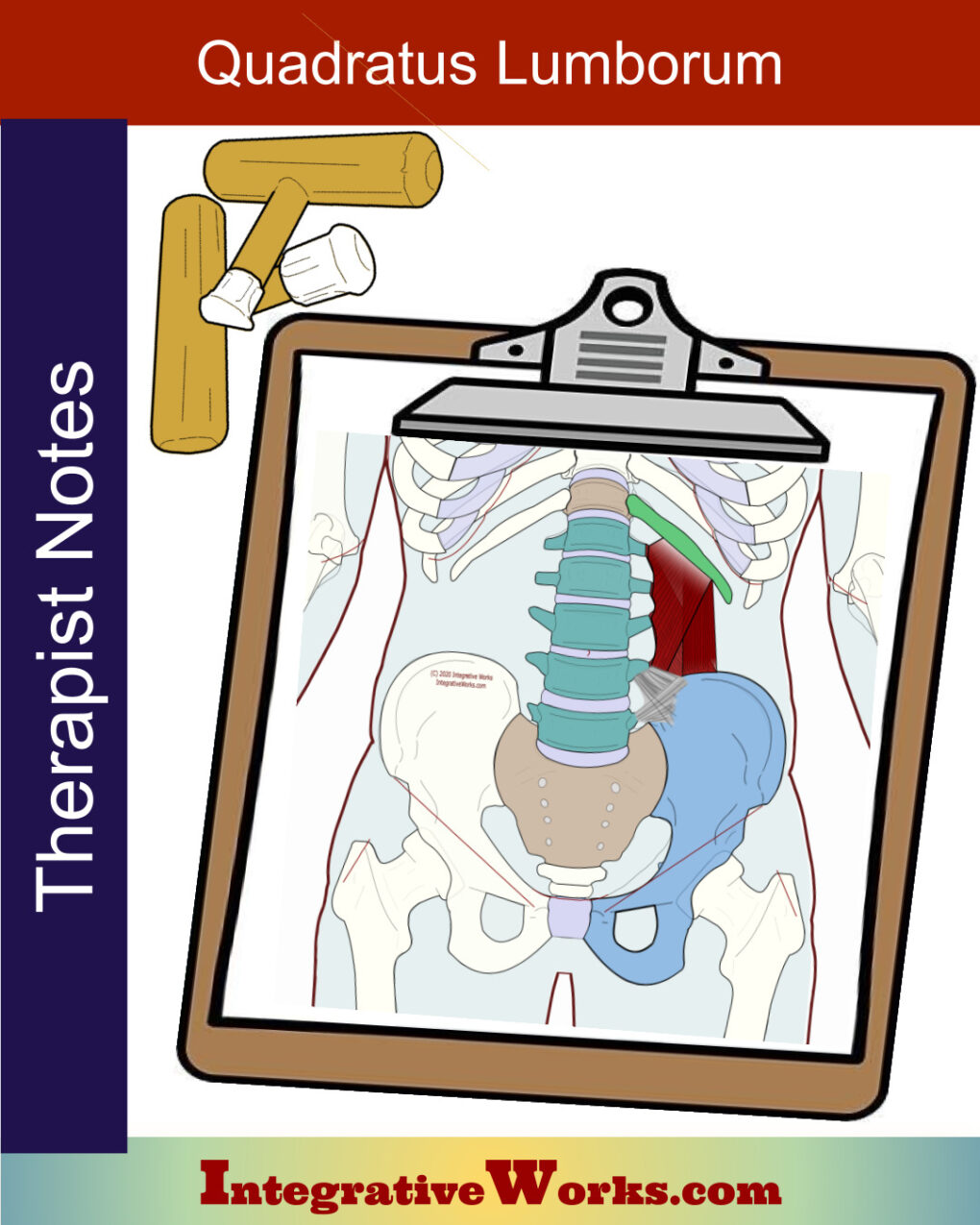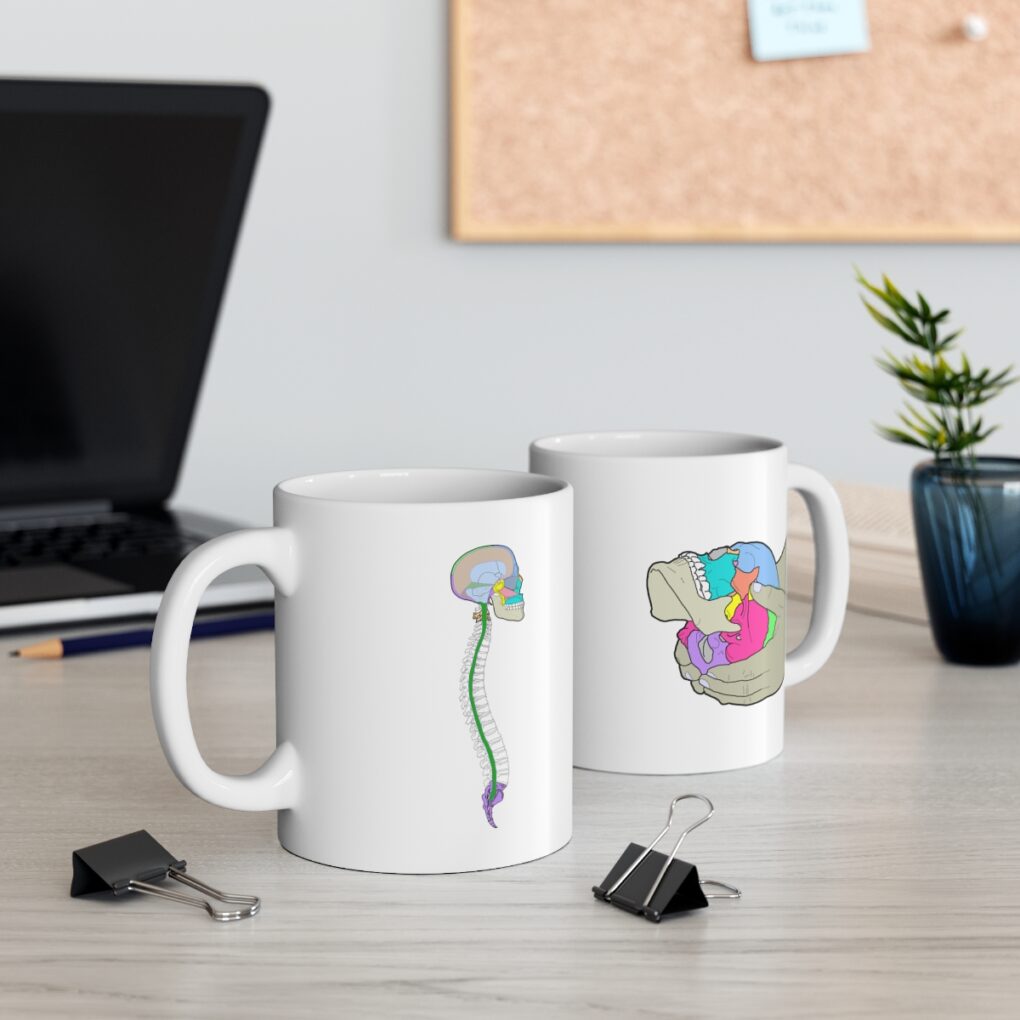Table of Contents
- How People Describe This Pain Pattern
- How You Activate and Intensify This Pain Pattern
- Self-Care – Getting Relief on Your Own
- Musculoskeletal Anatomy Behind Your Pain
- Therapy Notes for Massage and Bodywork
How People Describe This Pain Pattern
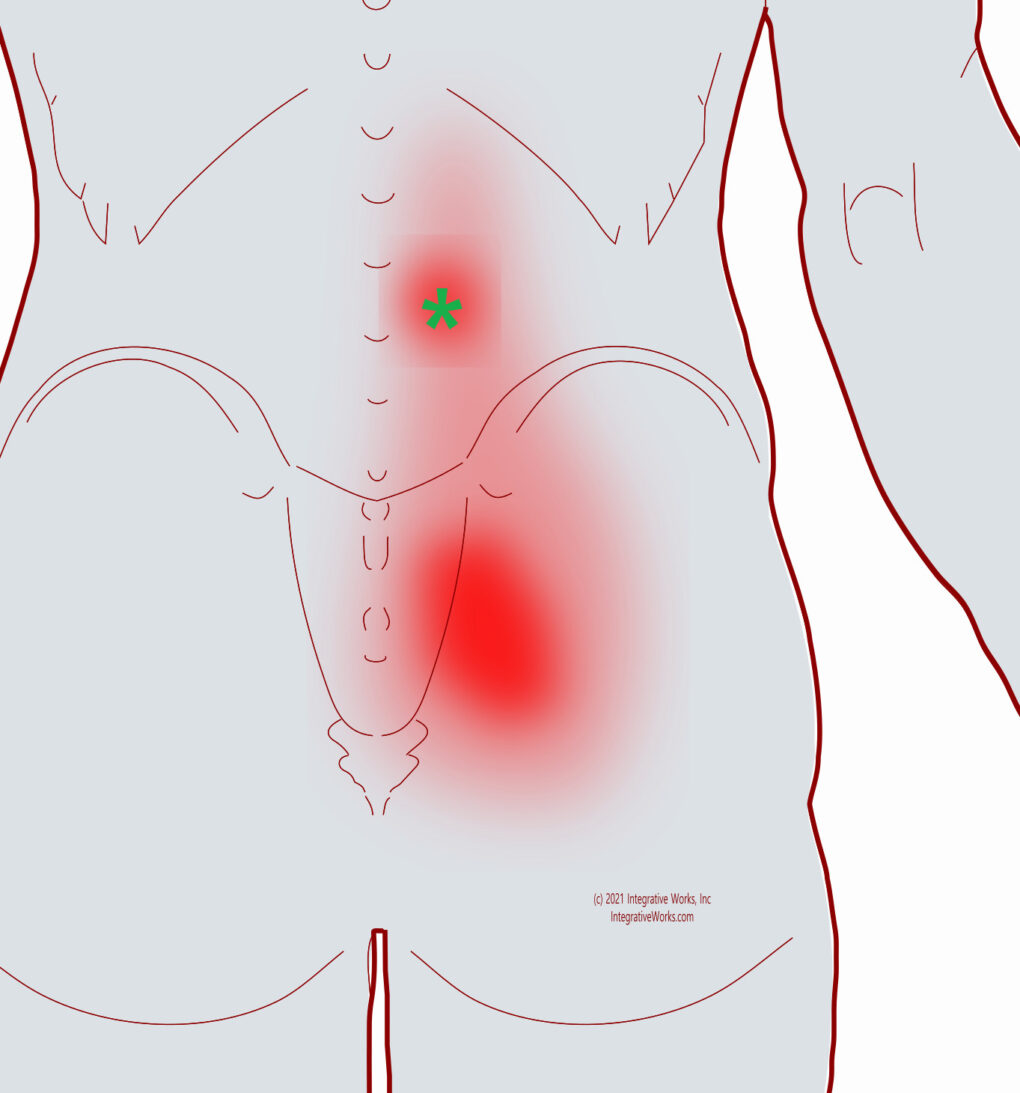
These people complain of sharp pain in the low back, as well as pain in the sacroiliac joint. This combination makes the low back feel fragile and unstable. This pattern is a combination of trigger points in two different muscles that become activated together. On the one hand, multifidi creates an intense, fragile feeling in the vertebrae. On the other hand, the quadratus lumborum creates an unstable back with hip pain.
Sometimes, the stiff low back bothers them more, and the SI joint is achy. At times, the low back problem is sharp and debilitating. In other cases, the low back is stiff, and the SI joint is more bothersome. For example, this person will tend to squat or reach to one side to pick up something off of a coffee table or chair instead of bending forward at the waist.
Morning Back Pain
It usually bothers people more intensely in the morning and can make going to the bathroom at night a real problem. In severe cases, these people have trouble getting out of bed in the morning and may crawl to the bathroom. Likewise, staying seated or for a while, such as long car trips or a conference, is a common complaint.
How You Activate and Intensify This Pain Pattern
Teetering
This condition commonly occurs just after performing a task that involves teetering forward at the waist, including:
- cutting grass
- washing dishes
- raking leaves
- vacuuming
- scrubbing a floor.
It can also come from bending forward and reaching out awkwardly as when someone stacks dishes in the back of a low cabinet, especially when they twist while reaching out.
Immobility
Also, once aggravated, sitting in a slumped position at a desk or in a car aggravates this condition. As well, people often wake with debilitating pain, especially when they sleep in the fetal position.
The Musculoskeletal Anatomy Behind Your Pain
Musculoskeletal Anatomy
This post on anatomy contains standard information about the origin, insertion, function, and innervation of muscles. Additionally, it includes information on functional considerations and anomalies.
Find Related Posts
Anatomy posts have a grid of all related posts. This includes posts on pain patterns, self-care, therapy notes, NMT protocols, cranial techniques, and cases.
Musculoskeletal Anatomy
This post on anatomy contains standard information about the origin, insertion, function, and innervation of muscles. Additionally, it includes information on functional considerations and anomalies.
Find Related Posts
Anatomy posts have a grid of all related posts. This includes posts on pain patterns, self-care, therapy notes, NMT protocols, cranial techniques, and cases.
Getting Relief on Your Own
Clinically Proven
Self-Care Strategies
Self-Care Posts have common sections to make them easy to follow and understand:
- Activities to Avoid or Change
- Strategies for Quick Relief
- Stretches and Exercise for Longer-Lasting Relief
- Yoga Corner
Therapy Notes for Massage and Bodywork
Better Bodywork
Through Shared Expertise
Therapy Notes provide details for cranial, spinal, and local joint work. These notes also link to a traditional neuromuscular protocol.
By treating integrative components first, direct work on the muscle becomes less intense while providing longer-lasting relief.
Support Integrative Works to
stay independent
and produce great content.
You can subscribe to our community on Patreon. You will get links to free content and access to exclusive content not seen on this site. In addition, we will be posting anatomy illustrations, treatment notes, and sections from our manuals not found on this site. Thank you so much for being so supportive.
Cranio Cradle Cup
This mug has classic, colorful illustrations of the craniosacral system and vault hold #3. It makes a great gift and conversation piece.
Tony Preston has a practice in Atlanta, Georgia, where he sees clients. He has written materials and instructed classes since the mid-90s. This includes anatomy, trigger points, cranial, and neuromuscular.
Question? Comment? Typo?
integrativeworks@gmail.com
Follow us on Instagram

*This site is undergoing significant changes. We are reformatting and expanding the posts to make them easier to read. The result will also be more accessible and include more patterns with better self-care. Meanwhile, there may be formatting, content presentation, and readability inconsistencies. Until we get older posts updated, please excuse our mess.

